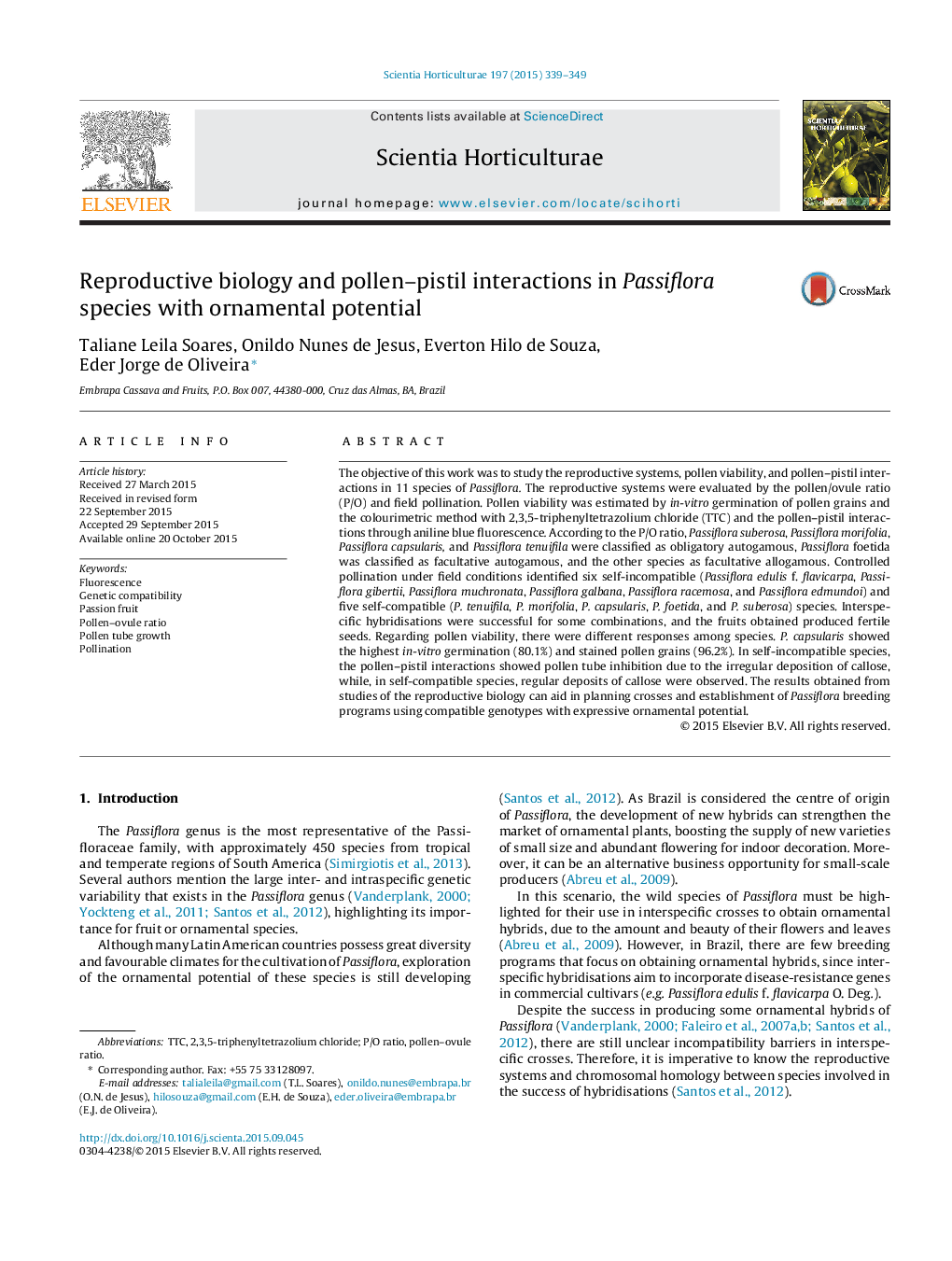| کد مقاله | کد نشریه | سال انتشار | مقاله انگلیسی | نسخه تمام متن |
|---|---|---|---|---|
| 6406772 | 1628801 | 2015 | 11 صفحه PDF | دانلود رایگان |

- Differences among Passiflora species for pollen amount and viability were detected.
- The pollen/ovule ratio and in vivo pollination were useful for reproductive analysis.
- Cross-pollination presented higher fertilization percentage than self-pollination.
- Depending on the species, self-incompatibility occurred in different floral structures.
- Regions of self-incompatibility in the pistil were detected by fluorescence analysis.
The objective of this work was to study the reproductive systems, pollen viability, and pollen-pistil interactions in 11 species of Passiflora. The reproductive systems were evaluated by the pollen/ovule ratio (P/O) and field pollination. Pollen viability was estimated by in-vitro germination of pollen grains and the colourimetric method with 2,3,5-triphenyltetrazolium chloride (TTC) and the pollen-pistil interactions through aniline blue fluorescence. According to the P/O ratio, Passiflora suberosa, Passiflora morifolia, Passiflora capsularis, and Passiflora tenuifila were classified as obligatory autogamous, Passiflora foetida was classified as facultative autogamous, and the other species as facultative allogamous. Controlled pollination under field conditions identified six self-incompatible (Passiflora edulis f. flavicarpa, Passiflora gibertii, Passiflora muchronata, Passiflora galbana, Passiflora racemosa, and Passiflora edmundoi) and five self-compatible (P. tenuifila, P. morifolia, P. capsularis, P. foetida, and P. suberosa) species. Interspecific hybridisations were successful for some combinations, and the fruits obtained produced fertile seeds. Regarding pollen viability, there were different responses among species. P. capsularis showed the highest in-vitro germination (80.1%) and stained pollen grains (96.2%). In self-incompatible species, the pollen-pistil interactions showed pollen tube inhibition due to the irregular deposition of callose, while, in self-compatible species, regular deposits of callose were observed. The results obtained from studies of the reproductive biology can aid in planning crosses and establishment of Passiflora breeding programs using compatible genotypes with expressive ornamental potential.
Journal: Scientia Horticulturae - Volume 197, 14 December 2015, Pages 339-349